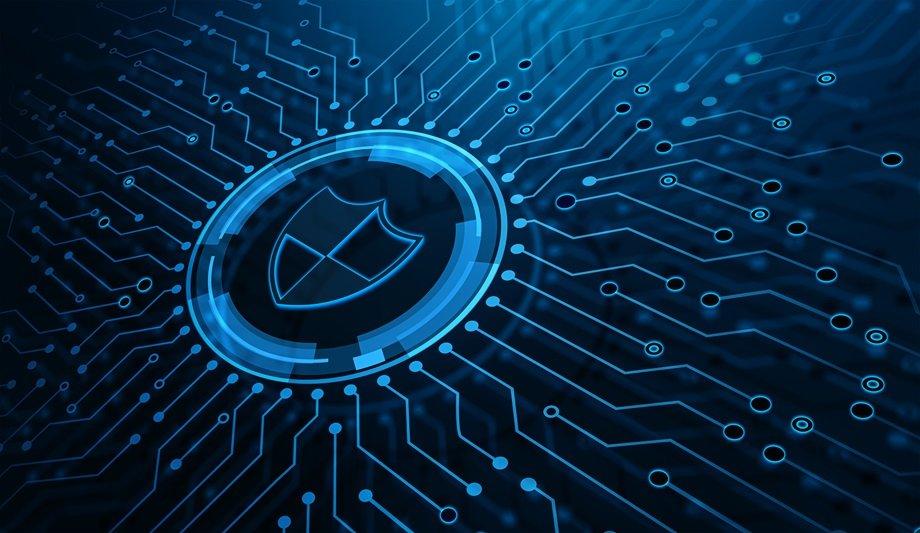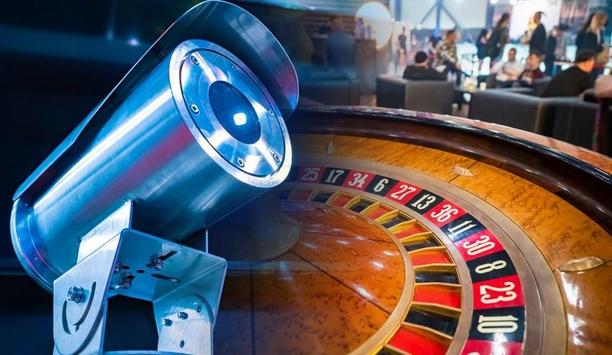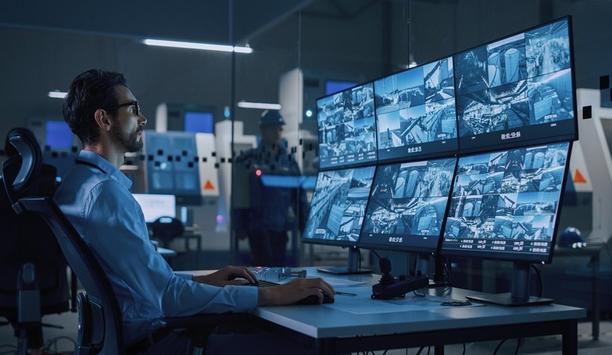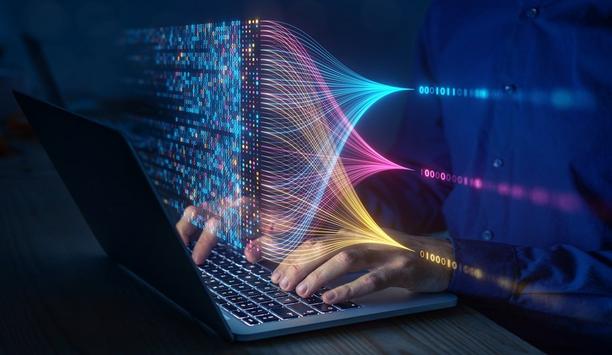What Current Technology Is A Game Changer For Security?
Editor Introduction
Ideally, every new product or technology serves a need in the market, but not all new products are created equal. The impact of some new technologies is so profound that they make us rethink our preconceptions and may create a total transition in the broader market. These are the technologies we call “game changers” because they prompt a significant shift in the current manner of doing or thinking about security. We asked this week’s Expert Panel Roundtable: What current technology is a “game changer” for physical security?
First-rate security technology considers the importance of a unified approach that combines the convenience of digital with the physical world's needs. With tools such as PKI-based (public-key infrastructure) mobile smart credentials that enable derived PIV credentials on mobile devices while also allowing users to authenticate into workstations, organizations can turn smartphones into high-assurance mobile authentication devices. This technology provides secure access to doors or workstations based on the proximity of authorized and verified users. Digital certificates establish a trusted signature, encryption, and identity between people, systems, and entities. These solutions go beyond just doors. They provide security for cabinets, machinery, vaults, labs, parking structures, document storage areas, and various types of equipment. In addition, they also provide secure phishing-resistant access to digital resources. The wide range of applications for this technology makes it essential for organizations looking to enhance enterprise security posture across both physical and digital resources.
Of the biggest advancements that I have seen is the functionality of local computing embedded in physical security systems, such as GPUs on cameras that allow local processing of computer vision analytics. One of the key benefits of this is that there doesn’t need to be complicated technical scoping to determine the network architecture that brings machine learning solutions to a security program. Additionally, there’s less latency to create new security alarms from either computer vision, PACS noise reduction, or other ML-powered anomaly detection. Taken together, this means more seamless deployment of ML applications, eliminating the complexity of networking and security conversations to get started in your environment. It’s a game changer for innovative companies wanting to leverage ML-driven technology across their organizations.
One technology that’s changing the game for physical security professionals is collaborative system design software. These intuitive platforms not only equip their users to design, install, and manage physical security systems, but they also streamline everything from the initial site survey to long-term device management. While endpoint devices at the forefront of integrated systems tend to get all the credit—or take all the blame—the real trick to building dependable physical security systems comes down to efficient site surveys at the front end and effective collaboration between key stakeholders throughout the life cycle of a system. This is only possible with tested and trusted collaborative system design software.
Cloud solutions are reshaping the security industry by delivering agile, scalable, and highly effective protections that maximize users’ security investments and transform how businesses operate. Their ability to gather and rapidly collate rich data sets will give organizations the ability to identify trends, predict behaviors, and make more informed decisions. The cloud is also emerging as a game changer in cybersecurity. Automatic software updates and enhancements deployed in real-time keep these systems up to date effortlessly, removing the burden of system maintenance and freeing up businesses to focus on other important tasks. The result is a safer digital landscape where security is no longer a luxury but an achievable foundation for businesses of all sizes and budgets.
When the Protect Duty Bill becomes law, public venues such as arenas, casinos, and hotels, will be legally required to devise and provide specific security plans for a terror attack. It will be important to look at Hostile Vehicle Mitigation (HVM) as part of a protective security strategy, as hostile vehicles have unfortunately become increasingly relied on by those seeking to launch an attack. This is where solutions such as anti-terror bollards come into play. Either fixed or retractable, certified HVM bollards are not only designed and tested to withstand impact from vehicles of various sizes and designs but also at different speed ranges, for example, 30 mph or 50 mph. Offering protection without impeding on the movement of pedestrians and cyclists, automated bollards can be integrated into a building management system, where a security team could control them in the same way they would a CCTV system and an alarm network.
Artificial Intelligence (AI) is going to be the game changer – and disruptor - in physical security as it is with almost every other industry. AI will have the ability to truly assess threats to the facilities and staff that physical security is there to protect. By combining all available data points – from perimeter detection to intrusion detection to fire system sensors to video analytics and computer vision – AI-powered physical security systems will be able to detect, assess, and respond faster and with greater accuracy than any human operator ever could. Of course, this raises the question as to who, or what, is ultimately in control of access to a facility, asset, or even intellectual property that is being protected. As AI is rapidly evolving at a breakneck pace, that and other questions about AI’s role in our civilization will need to be answered.
AI continues to be a game changer in our industry by simplifying security processes and procedures while requiring less human intervention. In the video security market, AI-based cameras have enabled new levels of analytics that can detect and search through captured data faster than ever. These cameras’ ability to detect people and vehicles reliably has enabled analytics at the edge (that analyze what those objects are doing) to be nearly error-free. What’s most exciting though is the continual evolution of AI. While it’s useful to know when a person enters a restricted area, the same technology is now being used to detect when anomalies take place. This “scene change detection” can alert operators when a door has been left ajar longer than normal, or when a car is left in a no-parking zone beyond x minutes. It can even alert when stock on a shelf is below a minimum threshold.
Cloud-connected cameras offer a new opportunity for camera system deployments. It adds a layer of managed cybersecurity for the camera systems and makes it easier for third parties such as AI software companies to integrate their solutions with the camera system. This adds more value to the installation. Like this, camera system deployments of all sizes can benefit from the same automation and enterprise-tier features that were always useful but may have previously only been accessible to the largest systems.
In security systems, AI-integrated devices are mainly access control devices and surveillance equipment. In access control devices, the most common face recognition machines use liveness detection and face recognition algorithms based on neural processing units (NPU), allowing for better compatibility with various ethnicities and enhanced anti-hacking capabilities. In surveillance cameras, the application of AI algorithms such as human shape recognition, posture recognition, behavior analysis, face recognition, and license plate recognition not only significantly improves the accuracy of events and alarms, but also effectively reduces unnecessary network bandwidth usage. Performing basic recognition and analysis at the front end and then uploading data as needed to the platform system can effectively reduce platform computational power requirements, allowing the platform to focus computational power on core businesses. For conventional security needs, cloud-based platform systems can effectively reduce hardware investments. Cloud-based storage is easier to expand and does not require dedicated maintenance.
The combination of cloud computing and storage technology with intelligent AI cameras, commonly referred to as VSaaS (Video Surveillance as a Service), has created a breakthrough in physical security performance and results. Smart cameras have evolved to active sensors, equipped with automated controls and AI algorithms that accurately detect intruders within seconds, leading to the execution of immediate deterrence actions without the inherent delays of human interaction. Cloud hosting and AI-based image characterization have elevated the effectiveness of video monitoring by focusing human operators on real threats and safety concerns that require intervention and possibly 911 dispatch. Cloud hosting of video-verified events is immediately sent as push notifications to stakeholders on mobile devices, thus allowing transparency to the effectiveness of the security solution. The result of this technological evolution? Dramatically improved security results and lower costs for both the service provider and property owner – driving higher market adoption and declines in burglary.
The amount of petty theft and organized retail crime (ORC) attacks continues to rise for retailers. Internal shrink is also of great concern. AI-based security technologies are proving to be instrumental in helping organizations keep a watchful eye without incurring excessive additional expenditures. Automated voice-down messages can be a powerful deterrent that lets bad actors know they are being watched for example. Remote video monitoring services like virtual guard services offer an alternative and safe way to engage with offenders and keep employees safe from confrontations. Point-of-sale exception reporting tied to video helps to further reduce shrink. The evolution of AI-based analytics is a game changer as it helps the industry offer more protection while requiring fewer resources. While AI is helping asset prevention specialists work smarter and reduce losses, it is also helping the industry shift from reacting to past events to a more proactive and preventative posture.
As threats continue to multiply, corporate security teams need modern methods to move beyond the antiquated challenge of utilizing a multitude of disconnected systems just to locate essential information about a threat. Platforms that collect and connect multiple sources of information for investigators and intelligence analysts solve these challenges and are a game-changer in providing security teams with the essential information they need to protect their businesses from threats. By providing a unified ecosystem that connects critical data to better manage the threat lifecycle, a robust security technology platform allows teams to not only be proactive when taking action when threats arise but also provides the necessary information needed to separate imminent threats from misinformation and disinformation. Overall, the security technology that emphasizes connected intelligence and centralized data will provide security teams with the tools to navigate the growing threat landscape to better respond to incidents, conduct investigations, and maintain one source of truth.
Editor Summary
When it comes to identifying game changers in the physical security world, the most obvious candidates are artificial intelligence (AI) and cloud systems, including all their various applications. Not surprisingly, several of our Expert Panelists named those technologies as factors significantly impacting the security market. Other technologies named by our panelists include mobile smart credentials, embedded computing, collaborative design software, anti-terror bollards, and unified security management platforms. Considering all the suggestions together, it is very clear that the game is, indeed, changing.
- Related links
- Magnetic Stripe Access control cards/ tags/ fobs
- Networkable Access control readers
- Infrared Surveillance cameras
- Bar Code Access control readers
- Card Access control cards/ tags/ fobs
- ANPR Software Video Surveillance software
- Biometric Access control software
- Self Contained - External Intruder alarm warning devices
- Infrared IP cameras
- Event Network Video Recorders (NVRs)
- Self Contained - Internal Intruder alarm warning devices
- Megapixel IP cameras
- Real Time Network Video Recorders (NVRs)
- PC-based Access control readers
- Biometric Access control readers
- Control Software Video Surveillance software
- Standalone Access control readers
- Contact Access control software
- Card Swipe Access control readers
- Internal Intruder alarm warning devices
- Network IP cameras
- Detection Software Video Surveillance software
- Proximity Access control cards/ tags/ fobs
- PCB Surveillance cameras
- Thermal Surveillance cameras
- PTZ IP cameras
- Real Time / Timelapse Network Video Recorders (NVRs)
- Tag Access control cards/ tags/ fobs
- Smart Card Access control cards/ tags/ fobs
- Wireless Surveillance cameras
- Proximity Access control software
- IP Surveillance Software Video Surveillance software
- Pinhole Surveillance cameras
- Smart Card Access control software
- Management Software Video Surveillance software
- Central Monitoring Option Access control software
- Magnetic Stripe Access control readers
- Recording Software Video Surveillance software
- Monitoring Software Video Surveillance software
- RFID Access control readers
- Surveillance Software Video Surveillance software
- Smart Card Access control readers
- Face Recognition Software Access control software
- License Access control software
- Video Detector Video signal devices & accessories
- Anviz Video Surveillance software
- Anviz Access control software
- Gallagher Intruder alarm warning devices
- Gallagher Access control software
- Salient Systems Video Surveillance software
- Anviz Access control readers
- Anviz Electronic lock systems
- Anviz IP cameras
- Gallagher Access control readers
- Anviz Network Video Recorders (NVRs)
- Gallagher Access control cards/ tags/ fobs
- Salient Systems Network Video Recorders (NVRs)
- Related categories
- Surveillance cameras
- Digital video recorders (DVRs)
- Video Surveillance software
- Access control software
- Intruder alarm warning devices
- IP cameras
- Access control readers
- Electronic lock systems
- Network Video Recorders (NVRs)
- Access control cards/ tags/ fobs
- Video signal devices & accessories
Expert commentary
Security beat
Security bytes
- Getting To Know Dan Grimm, VP And General Manager Of Computer Vision At RealNetworks
- Big Wins And The Importance Of Showing Up: Insights From SecurityInformed.com Editor Larry Anderson
- Setting Goals, Business Travels And Radioactivity: Success Secrets From Tiandy's John Van Den Elzen
- Getting To Know Jeff Burgess, President/CEO At BCDVideo
Multi-Residential Access Management And Security
DownloadGuide For HAAS: New Choice Of SMB Security System
DownloadPrecision And Intelligence: LiDAR's Role In Modern Security Ecosystems
DownloadHikvision: Solar Powered Product Introduction + HCP
DownloadGunshot Detection
DownloadVerkada TD52 Cloud-Based Video Intercom
exacqVision IP08-64T-R1XW-E X-Series 1U Rdnt IP NVR 64TB RAID5 Windows OS with 8 IP Ent Lic
Climax Technology TouchPanel-3 7” Color Graphic Touchscreen Panel




























